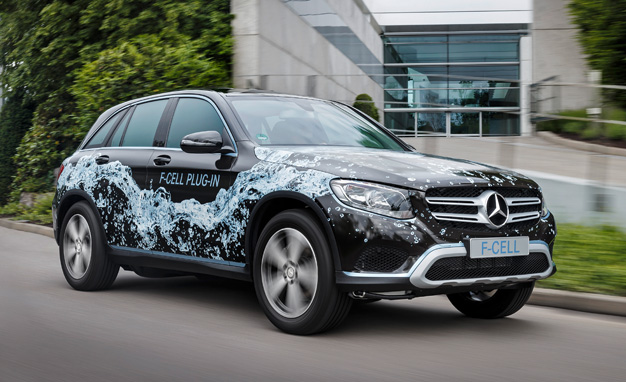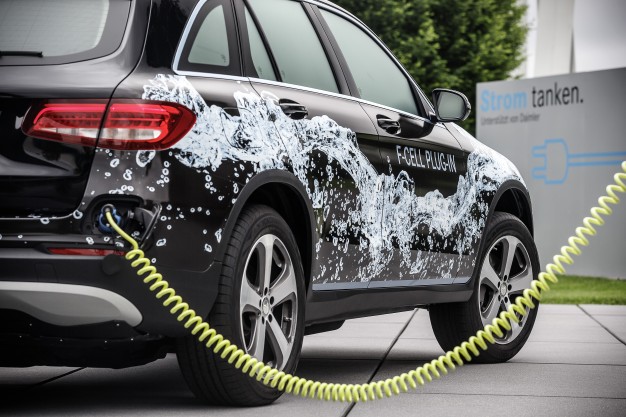
–
Mercedes has been experimenting with hydrogen-powered fuel-cell vehicles since the mid-1990s, and it has been leasing hydrogen-powered versions of the B-class in some markets since 2010. The company has confirmed it will be offering a new production fuel-cell vehicle next year, the GLC F-Cell, which also will be getting a battery pack that recharges via a wall plug.
–
That makes it a fuel-cell plug-in hybrid, which has to give it the highest score so far in alternative-powertrain bingo. The prototype version was revealed at the brand’s recent future-technology presentation, and it has a compact fuel cell that, for the first time, fits entirely within what would otherwise be the engine compartment. This fuel cell produces electricity that’s used to turn the rear wheels—the F-Cell only comes as two-wheel drive—and which can be supplemented by the on-board battery pack.
–
The fuel-cell stack was co-developed with Ford and is built in Canada. The complete powertrain is then assembled in Germany, with the F-Cell built in a small facility next to Merc’s vast Bremen plant.
–
The company’s requirement for a range of more than 300 miles has led to the GLC getting two fuel tanks, both encased in carbon-fiber weave; one is located underneath the center of the car and one lies transversely at the rear. We’re told that hydrogen refueling stations will be able to refill the tanks from empty in about three minutes. In total they can carry 4.3 kg of hydrogen, which will put them at a pressure of 700 BAR (10,152 PSI) and which is enough to provide around 280 miles of driving range. The remaining 30 miles comes from the 8-kWh battery pack that’s mounted above the rear tank.
–

–
–
- –
- Tomorrowland: We Drive Honda’s New Fuel-Cell Vehicle
- Instrumented Test: Toyota Mirai Fuel-Cell Sedan
- Mercedes-Benz GLC-class News, Photos, Specs, Reviews, and More
–
–
–
–
–
This brings us to the obvious problem. Like a very high percentage of the world’s population, you probably don’t live near a gas station with a hydrogen pump. Mercedes admits that when sales start next year the F-Cell will be restricted to markets with some hydrogen infrastructure, including parts of Europe, Japan, and–naturally–California. The company says that hydrogen infrastructure is set to grow strongly in the next few years, with 300 filling stations due to open in Germany by 2020.
–
There’s also no word on how much this ostentatiously green machine will cost (the Honda Clarity and the Toyota Mirai both crowd $ 60,000), but we’re told that Mercedes plans to sell the F-Cell at a “commercial price” and won’t be subsidizing it. That alone would be a big step toward the future.
–




